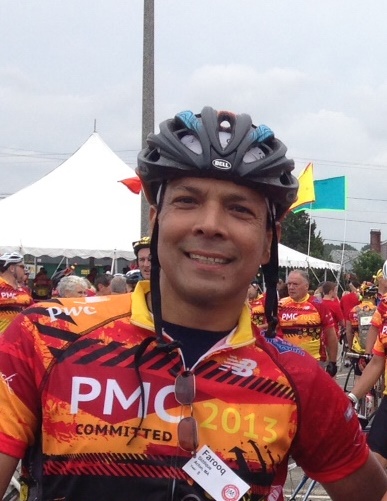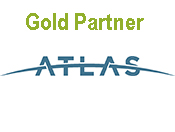Profile of Farooq Siddique, PE, LSP, Board Member, LSP Board of RegistrationThis is the fourth in a series of articles profiling current members of the LSP Board of Registration. Farooq Siddique arrived in Boston in early January 1987, in the middle of a snowstorm. It was the first snow that the 27-year-old structural engineer from Bangladesh had ever seen. He stayed anyway.
Siddique, a 2011 appointee to the LSP Board, came to the United States to study computer modeling at Northeastern University. There was, however, a small glitch in his plan. As it turned out, the civil engineering program which had brought him halfway around the world did not have a modeling unit, so he structured his course in environmental studies and took all his electives in mathematics. The university’s transportation engineering department, which needed his programming skills, offered him a graduate research assistantship and financial support. “I got my funding from Transportation, most of the courses were statistics and math-related, the program was environmental, and my Master’s degree was in civil engineering,” he says. That same combination of serendipity, opportunity and skill sets that range from civil engineering to regulatory compliance to computer programming have propelled Siddique to where he is today – President of FS Engineers, Inc., an environmental consulting firm that operates out of Clock Tower Place (the former Digital headquarters) in Maynard. The firm focuses on environmental and MCP-related work for private and public sector clients throughout New England, New York, and as far away as Georgia. Coming from Bangladesh, Siddique thought that living in the US would be a bigger culture shock. But he soon found that the fundamental social values and core customs are essentially the same once you get past the exterior cosmetics - less like the TV shows ‘Dallas’ or ‘Dynasty,’ and more like ‘The Waltons’ and ‘Little House on the Prairie.’ He also learned that grapefruit has nothing to do with grapes, and that skiing is pretty safe as long you are not moving. Boston appealed to him both for its diversity and its cultural activities. He is very fond of classical music, especially classical guitar, which he had played growing up. He married Berit Strong, a professional classical guitarist, who he met as a student. They have two children and live in the suburbs of Boston with two West Highland White Terriers. As Siddique explains, he started off specializing in structural engineering with a secondary focus in water resources engineering during his undergraduate studies in Bangladesh. For his undergraduate thesis, he studied the effects of temperature gradient on high rise buildings (e.g., the tendency of large window panes to pop out). One of buildings he studied was the John Hancock Tower in Boston. His first job out of school involved designing concrete deck girder bridges and hydraulic structures for a large scale irrigation project. Then in 1984 came his first big break. Siddique’s fluency in computer programming and database management, when such skill sets were hard to come by, earned him a position at the massive World Bank-funded, United Nations Development Program (UNDP), Master Plan Organization (MPO). The MPO was tasked with preparing a long-range national water resources development plan for Bangladesh, and Siddique’s charge was to collect, manage, and analyze databases on soils, cropping patterns, rainfall, groundwater, and surface water by catchment area and then by planning area. Each planning area consisted of many catchment areas and the whole country was subdivided into many planning areas. MPO’s planning programs would serve as the foundation for national water use management and economic planning. He worked on the project for 30 months; it is still ongoing. After graduate school at Northeastern, Siddique joined the environmental consulting firm ERM, which had been tasked by U.S. EPA to oversee its Capacity Assurance Plan (CAP) and conduct hazardous waste management planning for the 13 Northeast states. “The program’s intent was to ensure that each state could manage the waste that it generated,” he explains. “Bi-annual reports and manifests needed to be analyzed to see how each state managed its hazardous waste.” “All the data was dumped on me, and I would make tables and reports that showed what was going on,” he says. The project ended with 12 of the 13 states signing a compact memorializing how each would address the waste it generated. Hazardous materials management, which involved a range of disciplines, appealed to Siddique, and soon after he joined ERM he found himself working on a variety of environmental compliance projects. From there he joined the Framingham-based consulting firm CDW and continued with his work on brownfields assessment and remediation. In 1995, he took the LSP exam and received his license. “Every once in a while you get to do something pretty special,” Siddique says. “I was the LSP of Record for the site where then-Governor Paul Cellucci signed the first brownfields legislation. I conducted the assessment, prepared the remedial design, obtained some pretty tricky permits, implemented the remedial plan, and closed out the site. It was quite fun.” “Another project I had great fun doing was in-situ chemical injection at the Ottati and Goss EPA Superfund site in Kingston, NH. It was at that time most likely the largest chemical injection project in the US. The sheer magnitude of the amount (380,000 pounds) of chemical injected, combined with the logistics of transporting trailer loads of chemicals, made for a very exciting time.” For Siddique, it is paramount for qualified environmental consultants to become licensed. “If you are working in this field you should be an LSP,” he said. “The moment you are eligible, you should get your license. That validates your profession. It means you understand the ethical requirements; you understand the social and moral components; and you understand the science.” His involvement with both the LSP Association (LSPA) and the LSP Board (and with ASCE and BSCES) is an extension of his commitment to the profession and his firm belief in the importance of contributing to its advancement. Siddique chaired the LSPA’s Education Committee before becoming an LSPA Board member, and eventually Clerk and Treasurer. In 2010, with encouragement from fellow LSPA Board members, Siddique put his name in for consideration for a seat on the LSP Board. His nomination to fill one of the three “at large” LSP positions on the LSP Board was approved by Governor Patrick within six months. For Siddique, the Board’s work is all about the profession. The focus, he says, is “whatever is demanded at the time. It constantly changes and evolves.” The current priority, he says, is finalizing the new licensing exam that is required now that revisions to the MCP are in effect, and reviewing applications received from people who want to take that exam to become an LSP. “I think the LSP Board is in a very good spot,” says Siddique. “It is functioning quite well. Its members are focusing on the tasks at hand: regulations are being reviewed, complaints are being investigated; the backlogs are shrinking. We are making good headway in every department.” “We are doing what we need to do, we are doing it well, and we are doing it on time,” he says. The culture of the LSP Board is different now than it was in the early days of the program, says Siddique, when the Board had to interpret the new regulations and lay the foundation for the future. “I don’t think it was easy,” he says, noting that LSPs come from a range of disciplines and, unlike engineers, are not taught the rules of their licensed profession in school. “For the first five or six years, there was a lot of work just getting people to understand what they were supposed to be doing as LSPs,” he explains. As Siddique sees it, the dynamics of those early years created tension between some LSPs and the Board, because as one of its functions the Board is charged with meting out discipline. “When I was first involved with the LSPA, I only knew one or two of the LSP Board members because there was not much interaction between the two organizations,” he says. That has changed, a factor Siddique attributes to fewer disciplinary cases being bought before the Board. “The interaction between the two is much more congenial.” Siddique reports that he wants to step back into active participation in the LSPA when his time on the Board comes to an end. He misses the meetings and he misses the people. There already is a heightened level of interaction, discussion and collaboration between the two organizations, he says. “Even though we have different frameworks and functions, we work together more as teammates than as adversaries.”
|


































